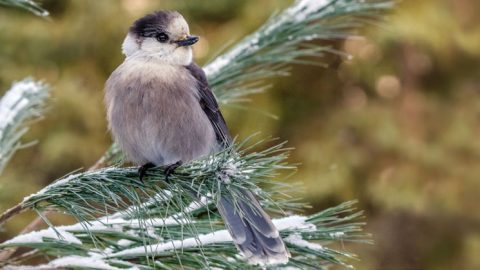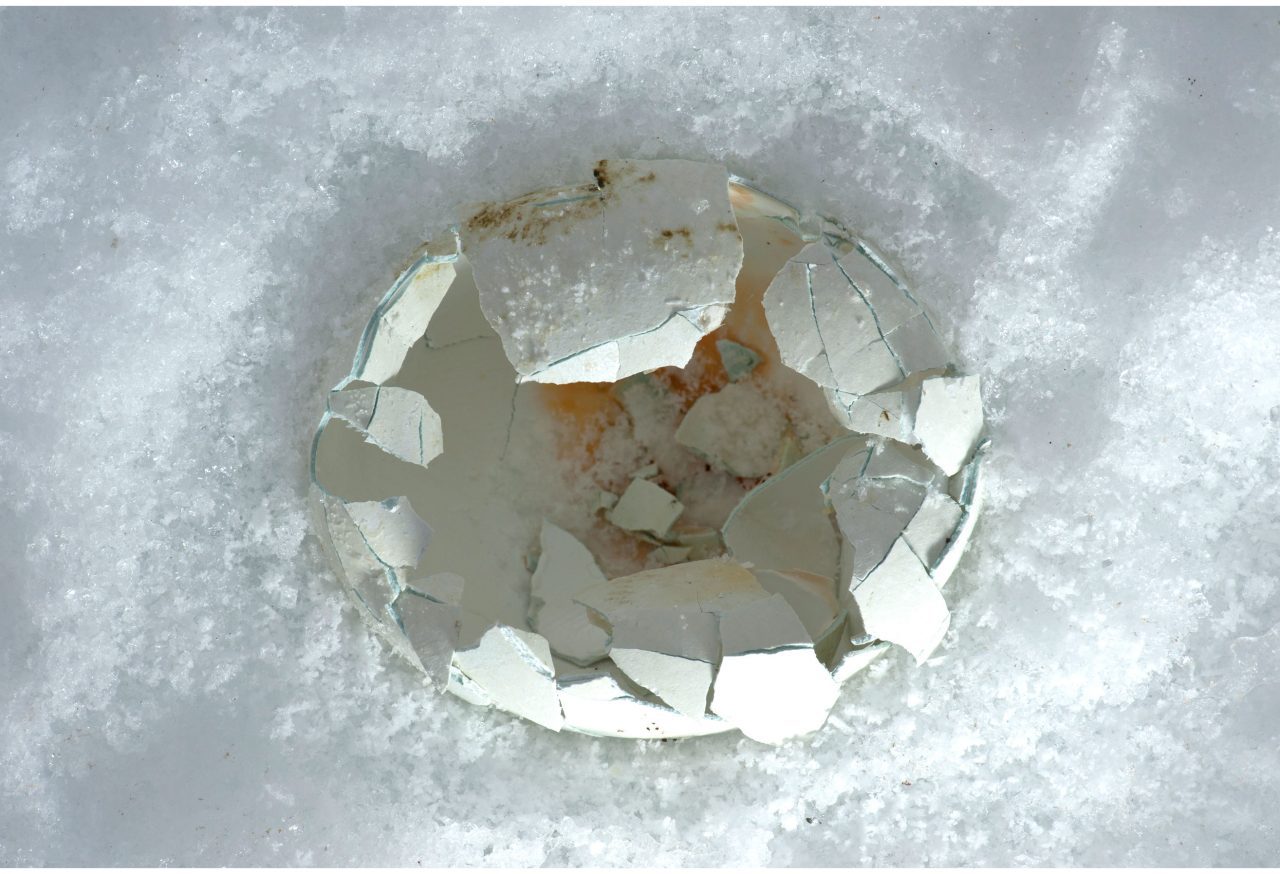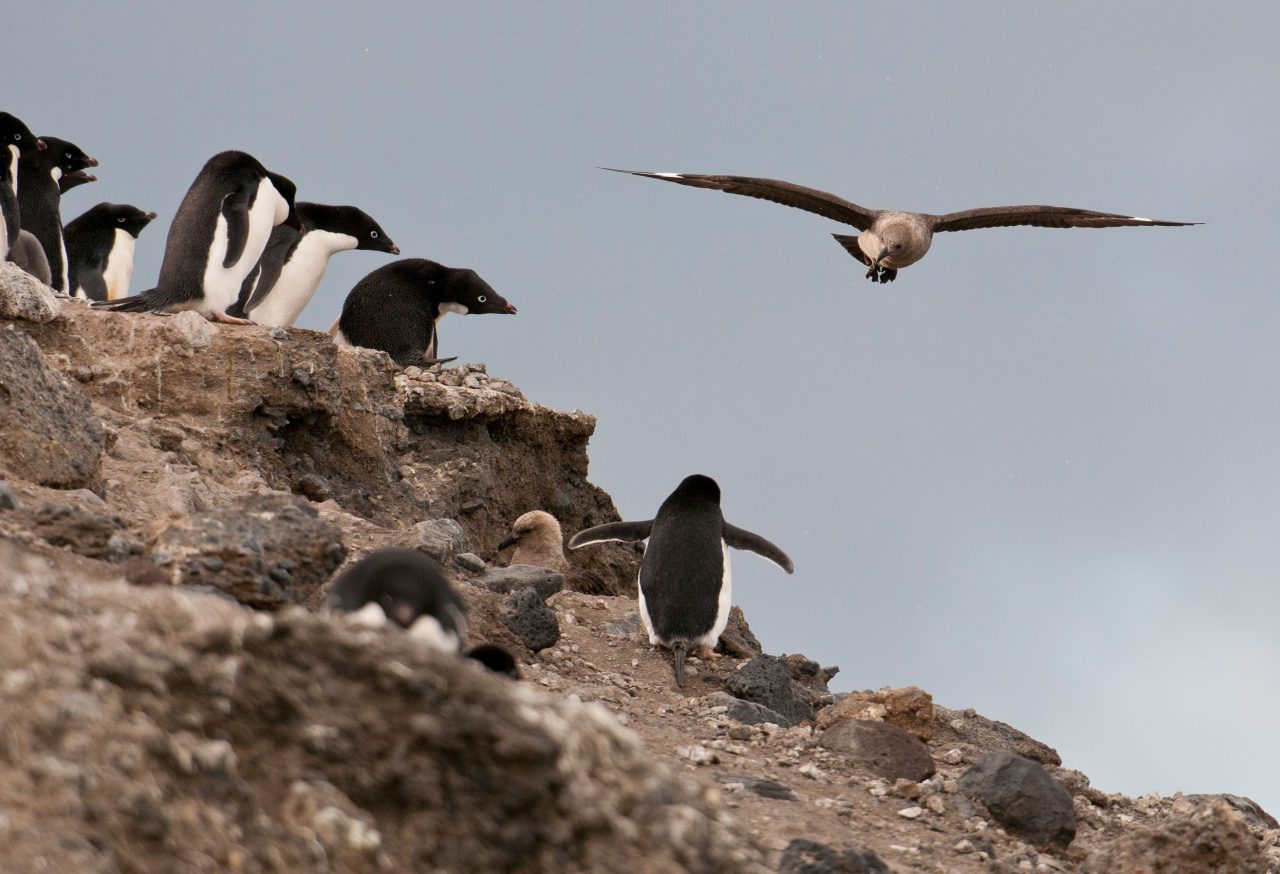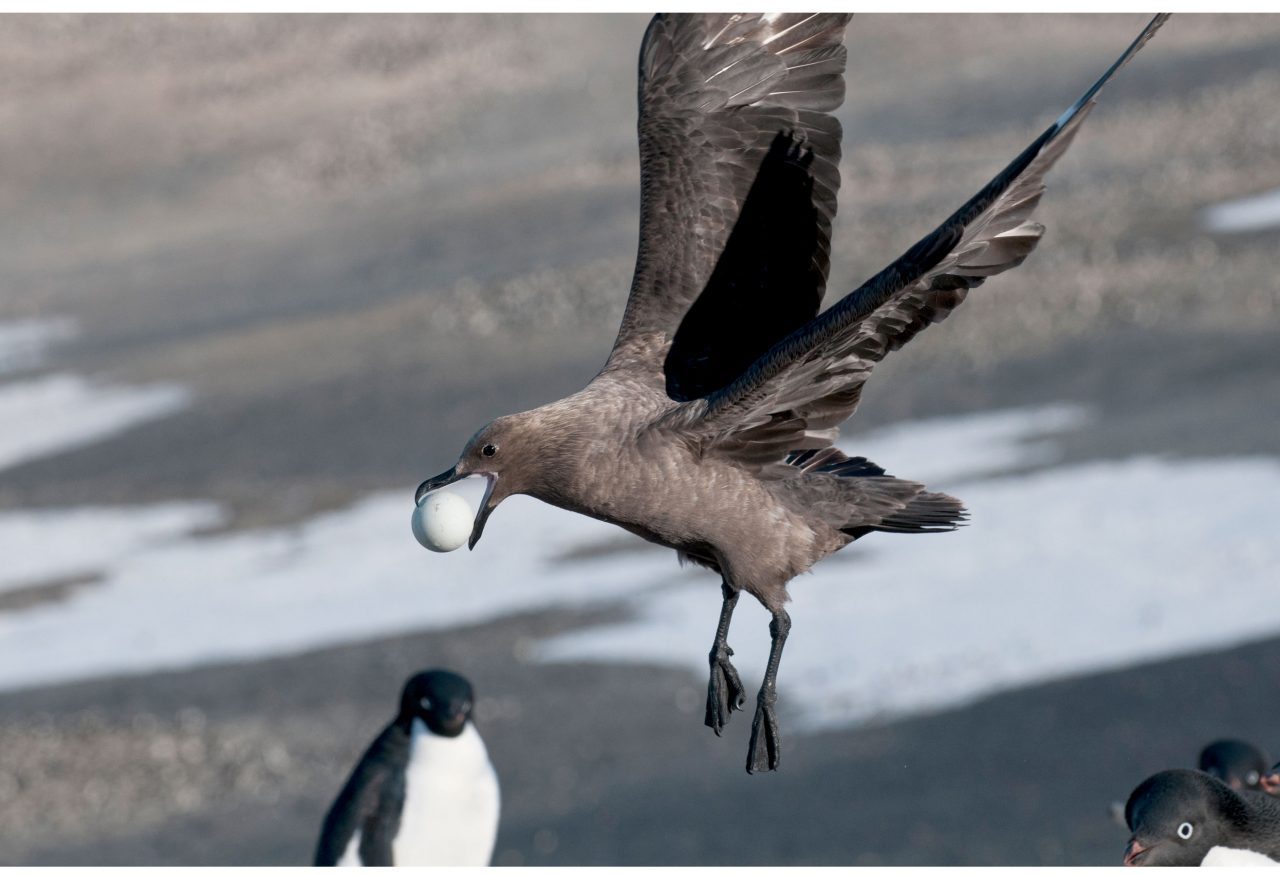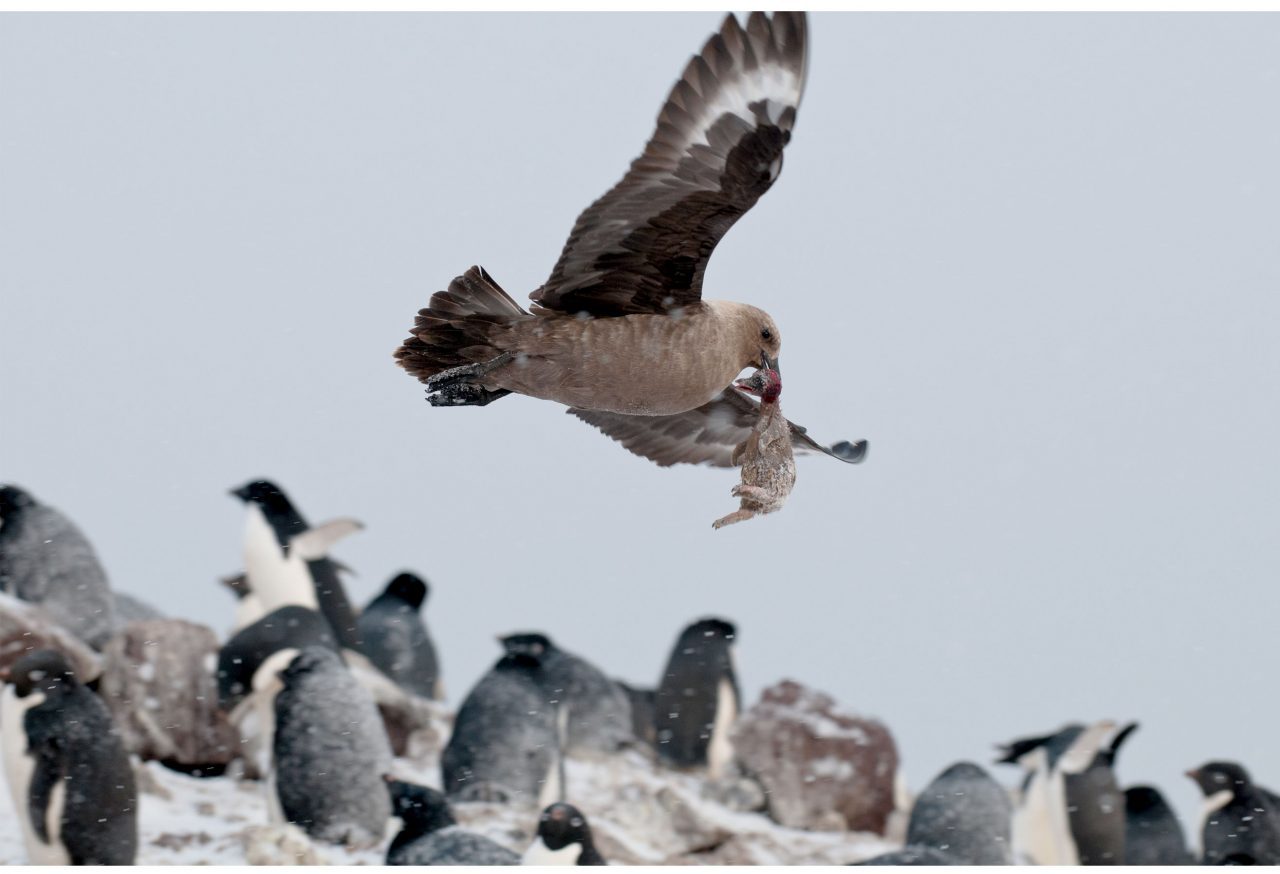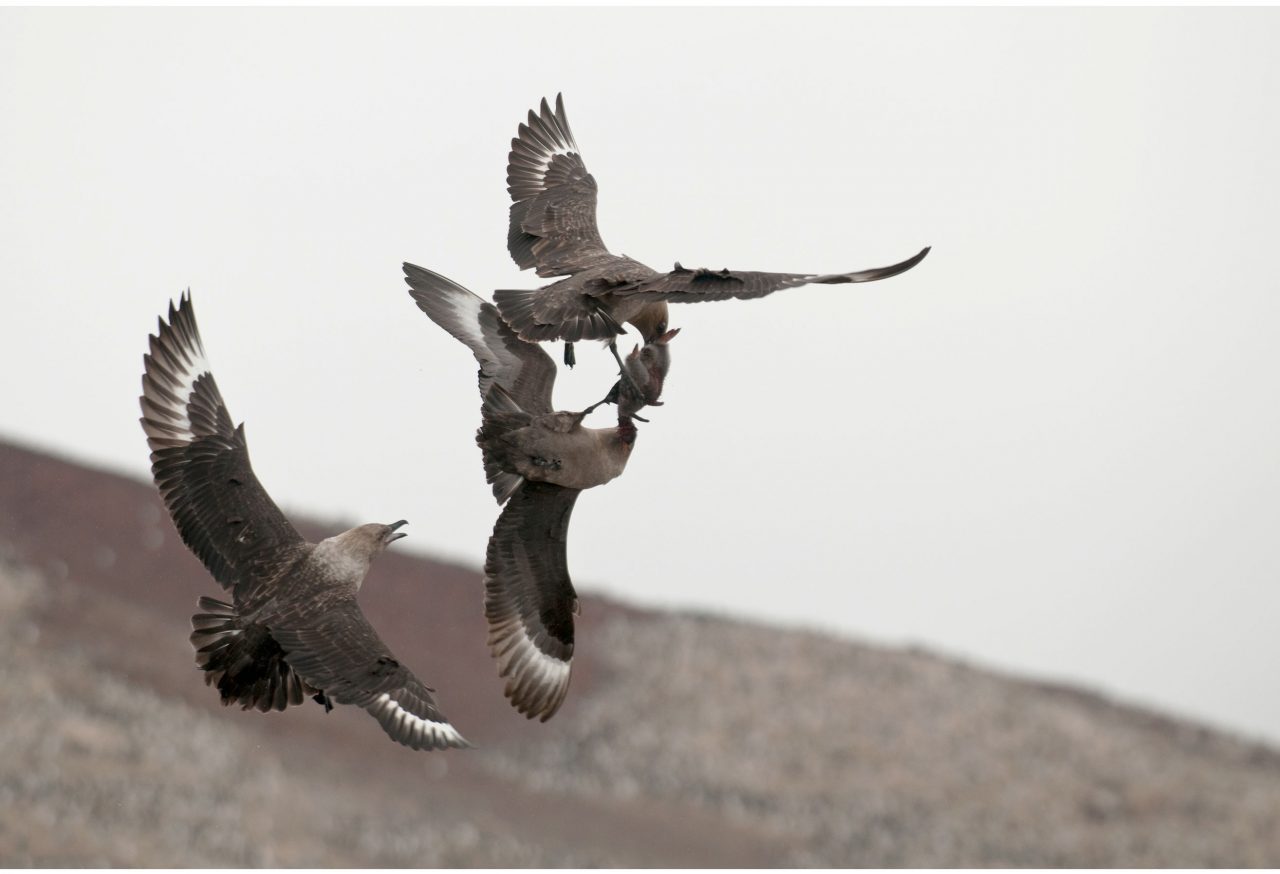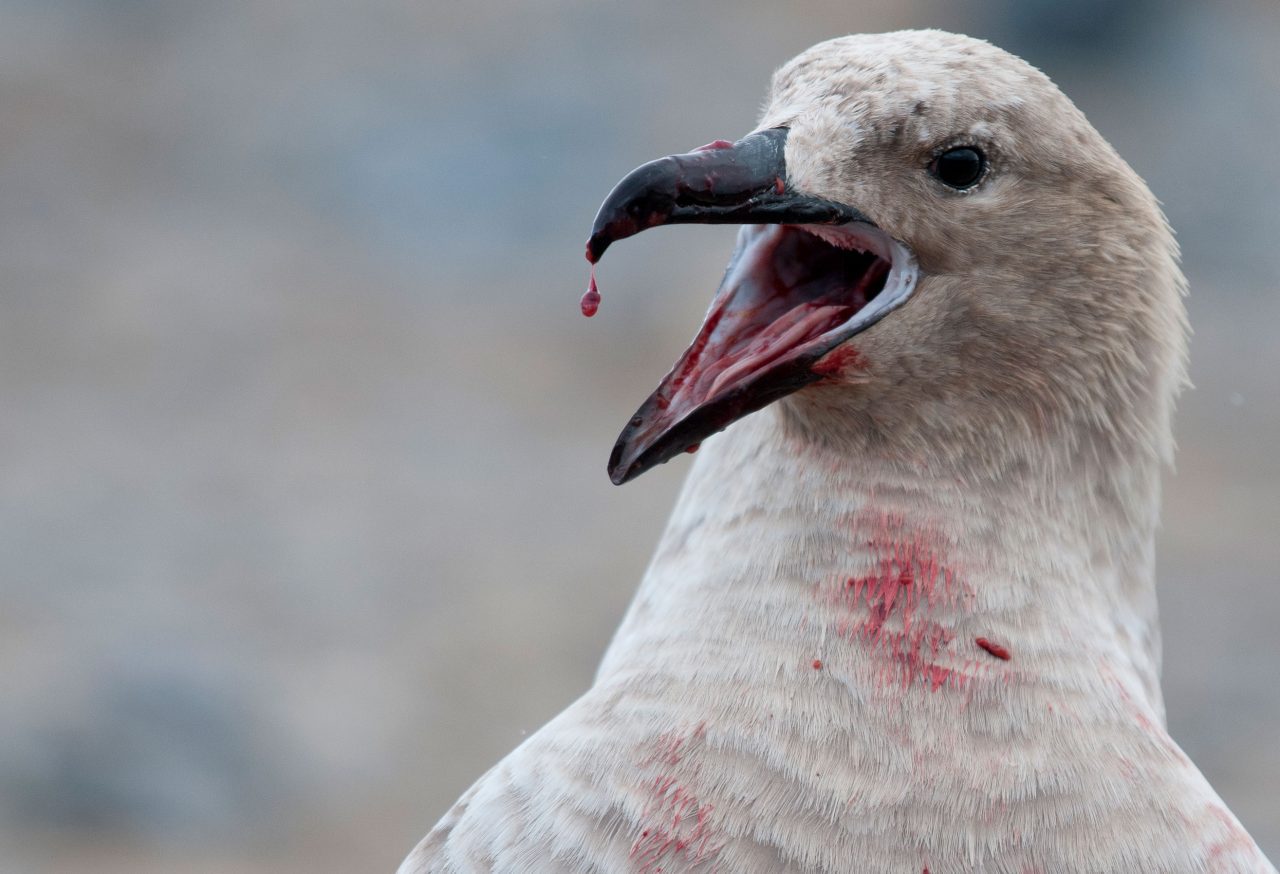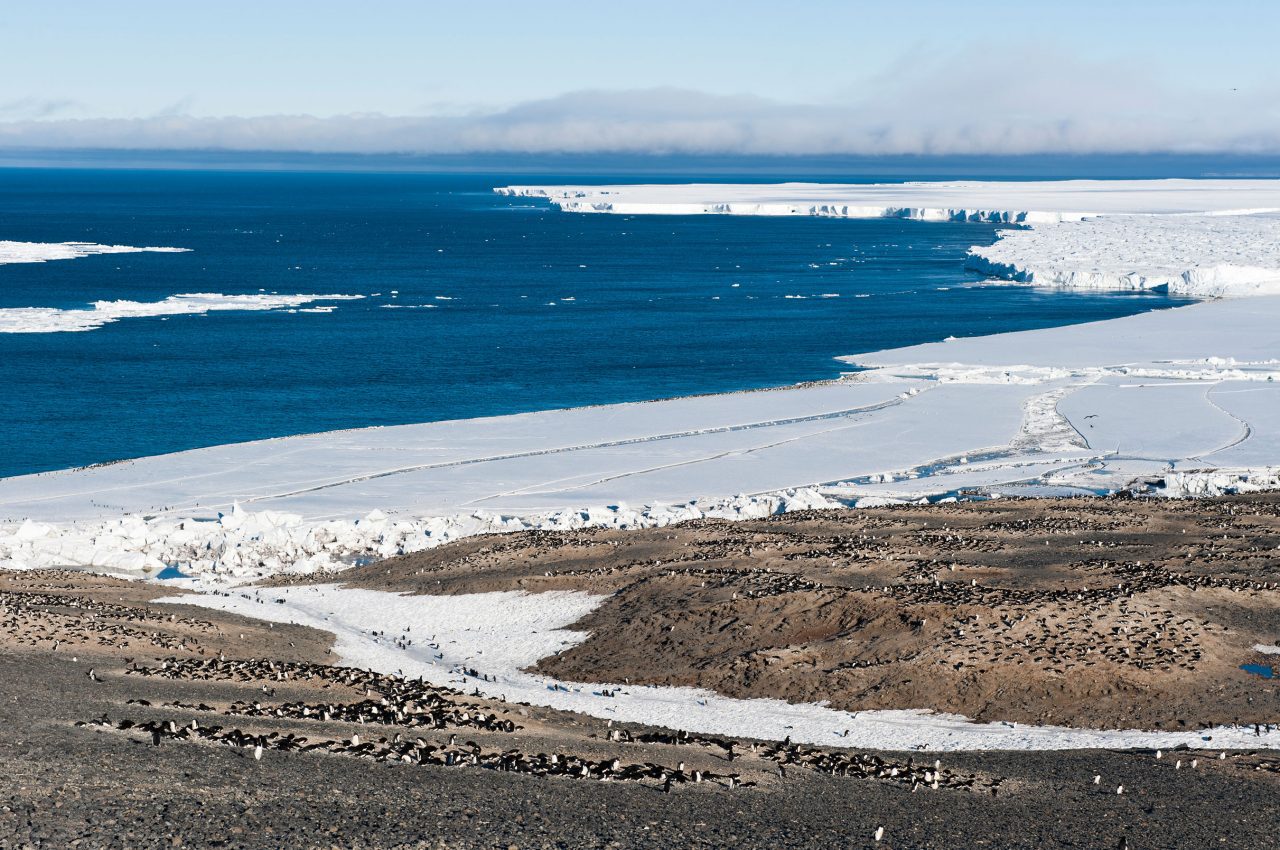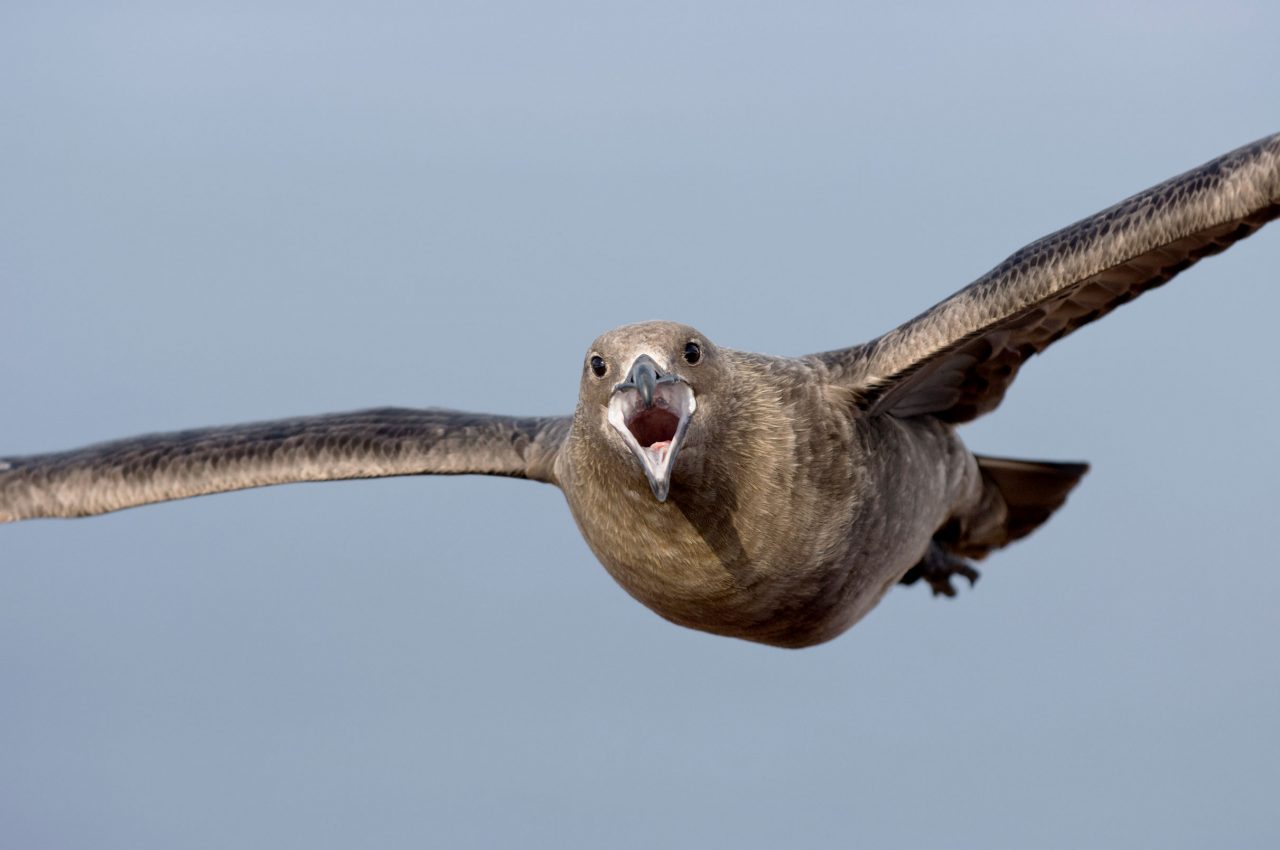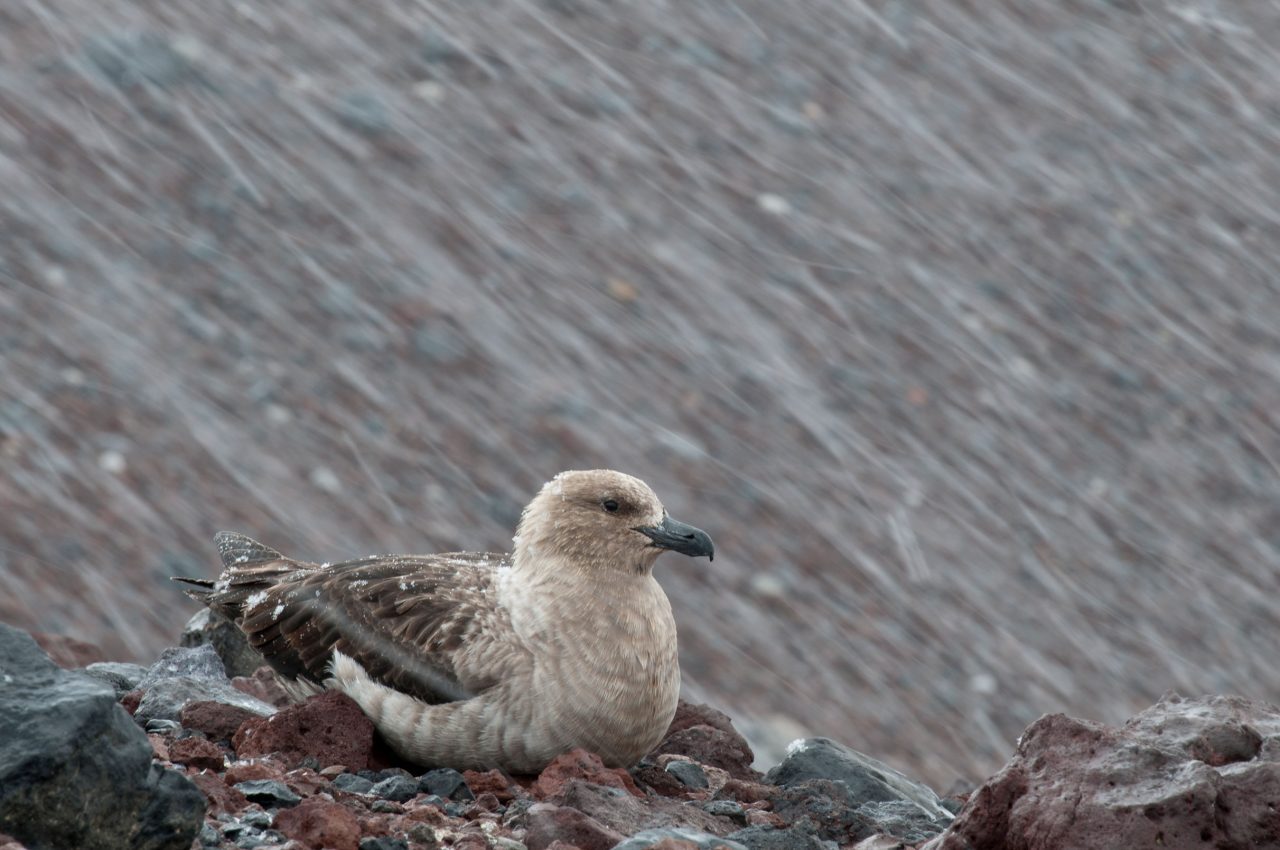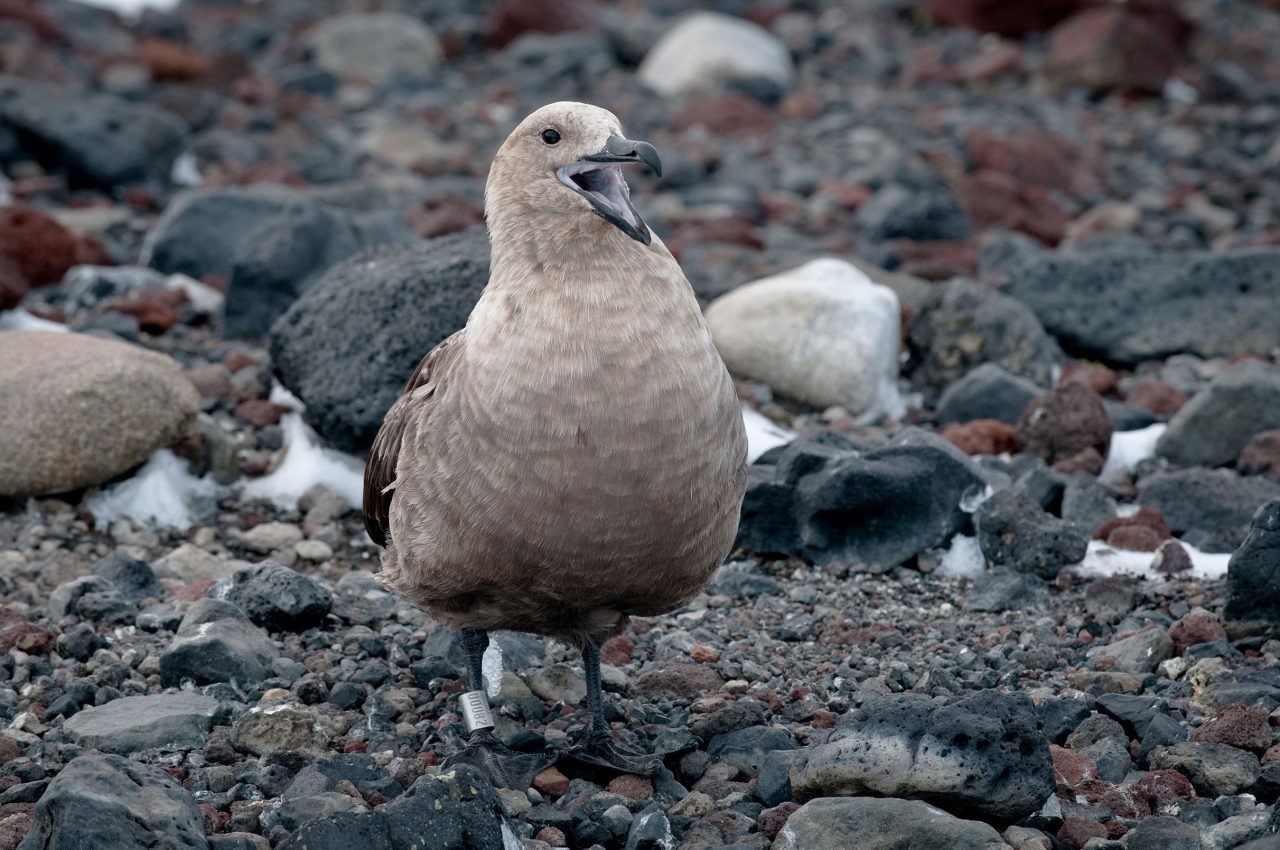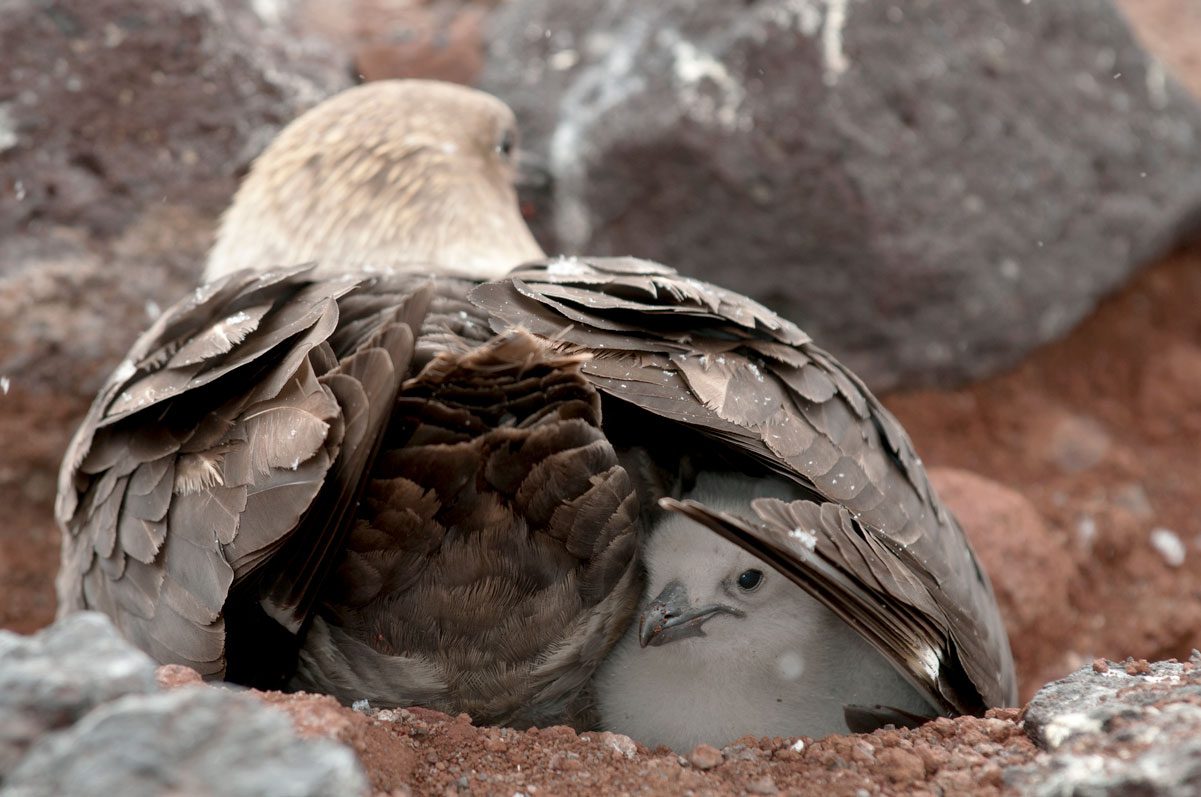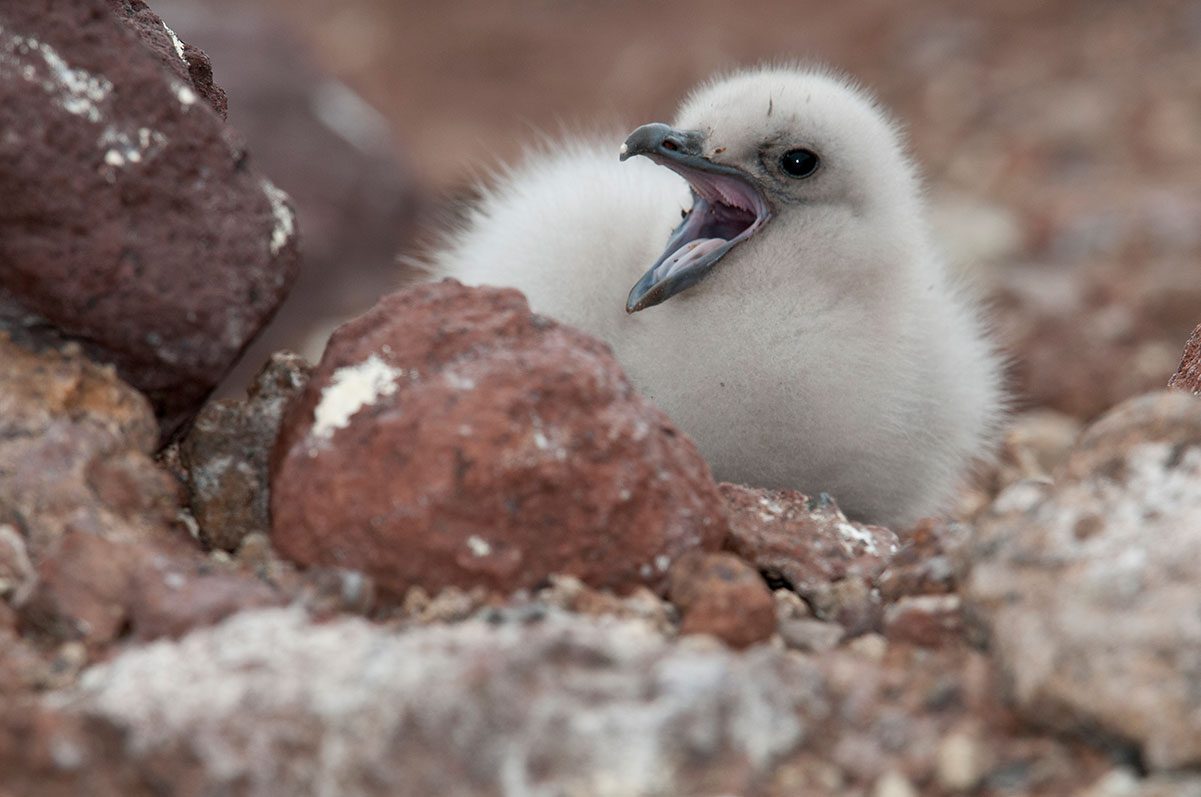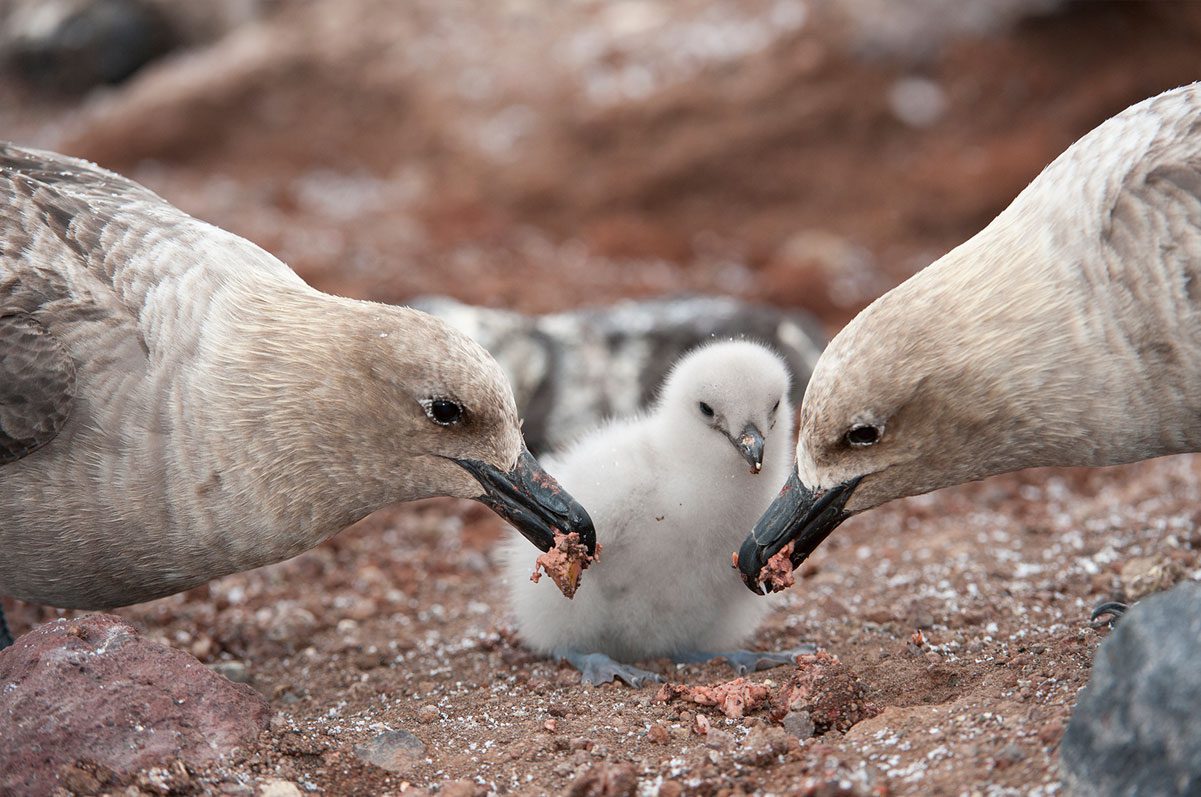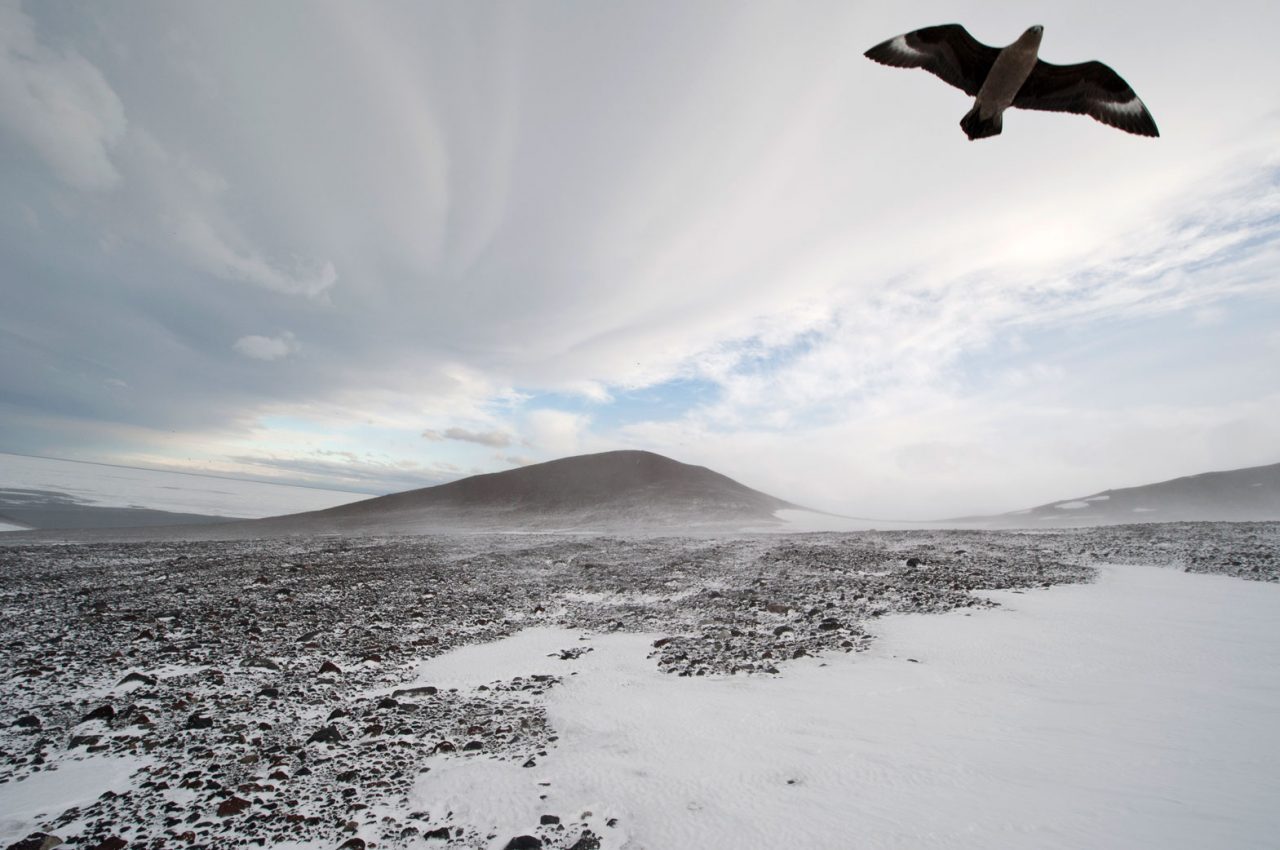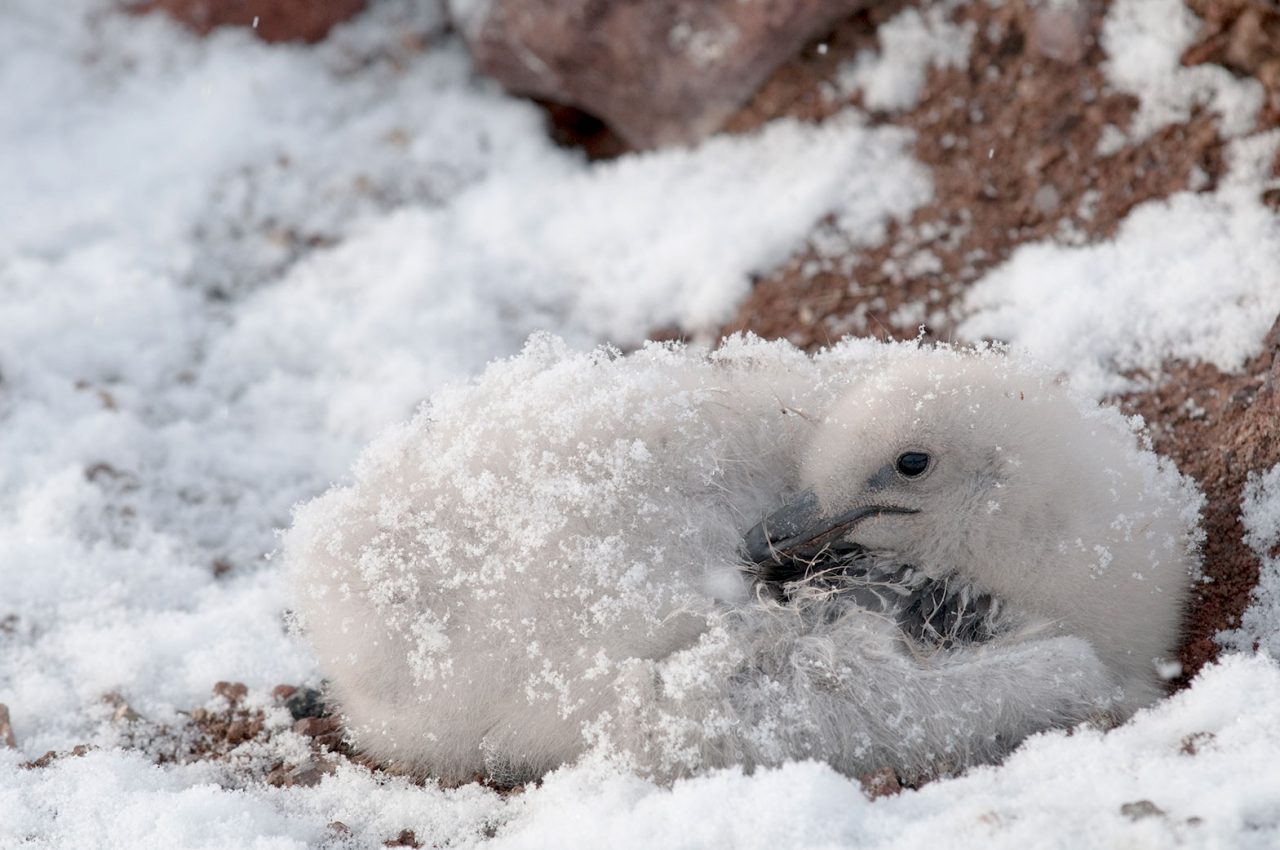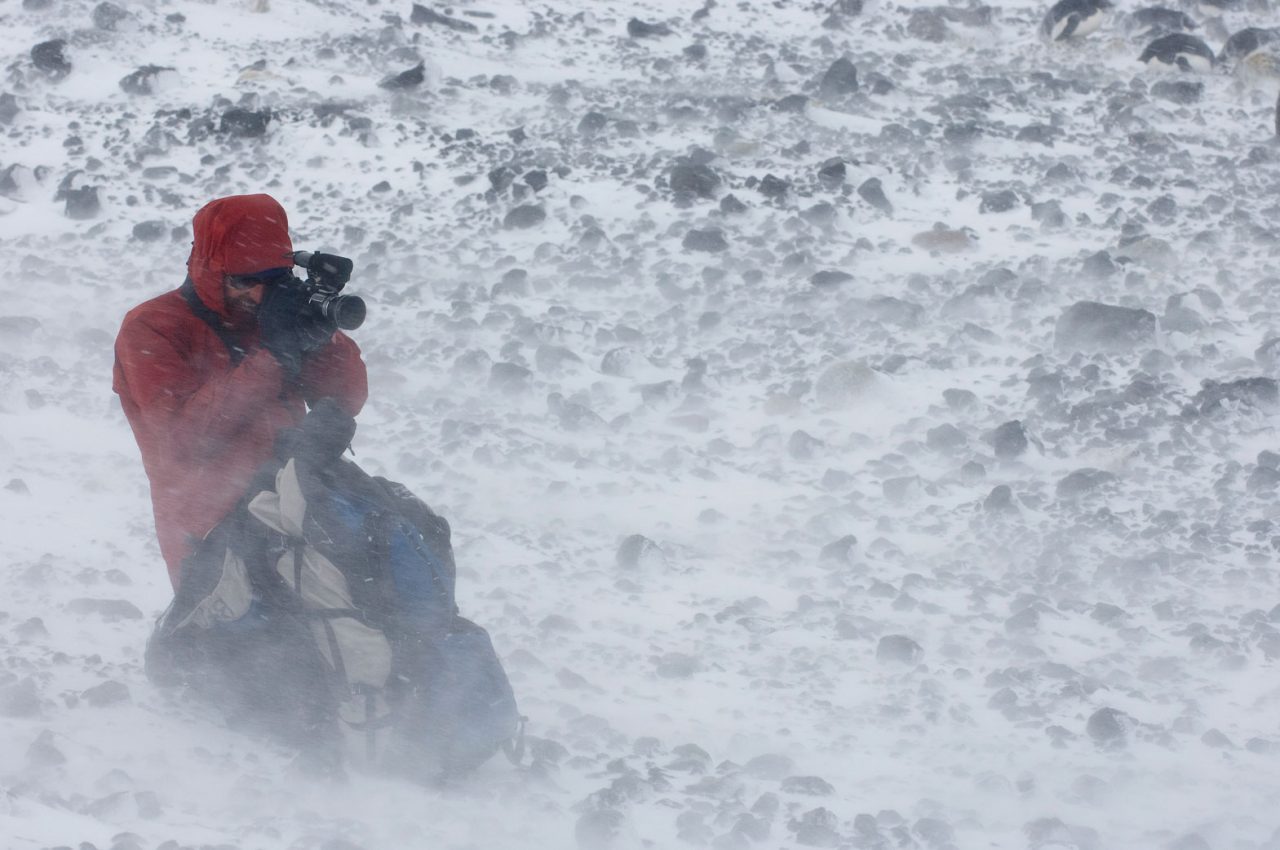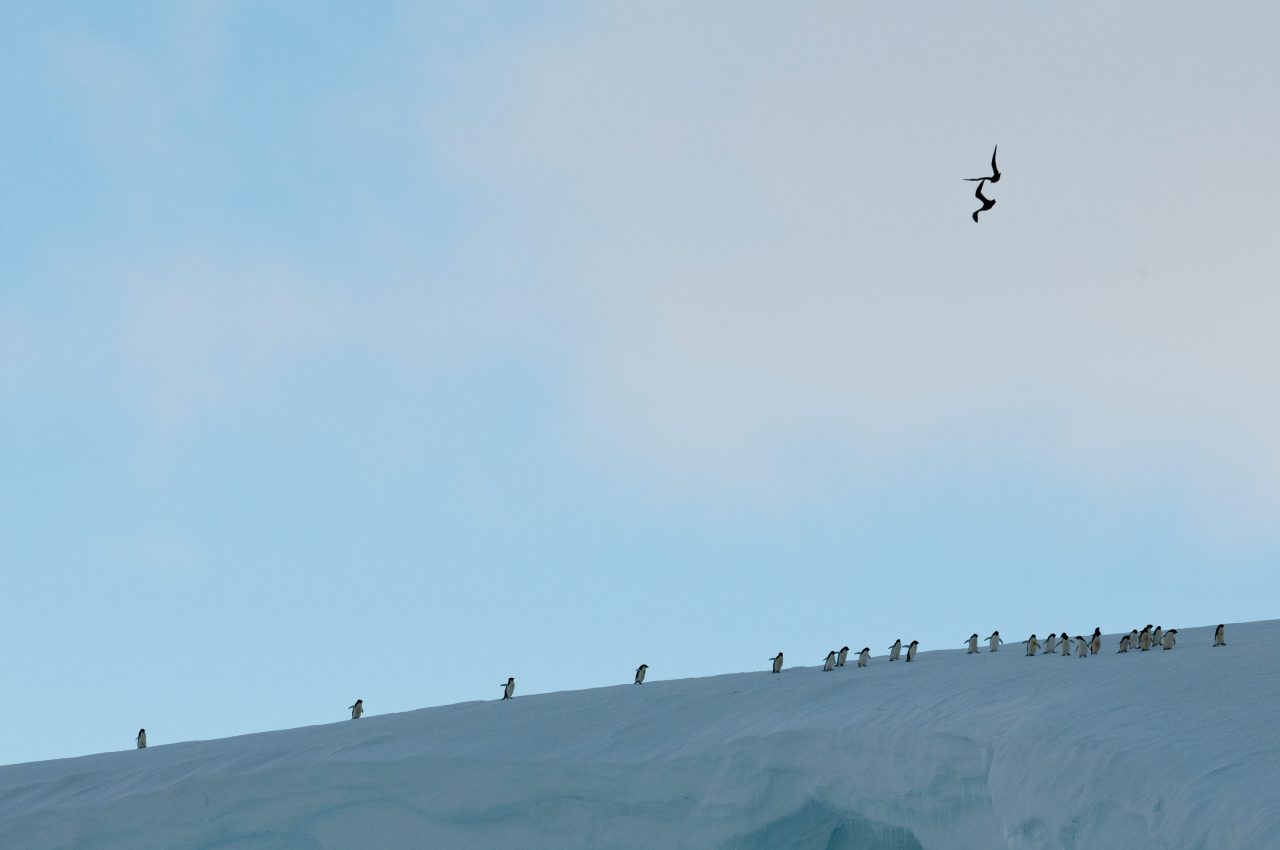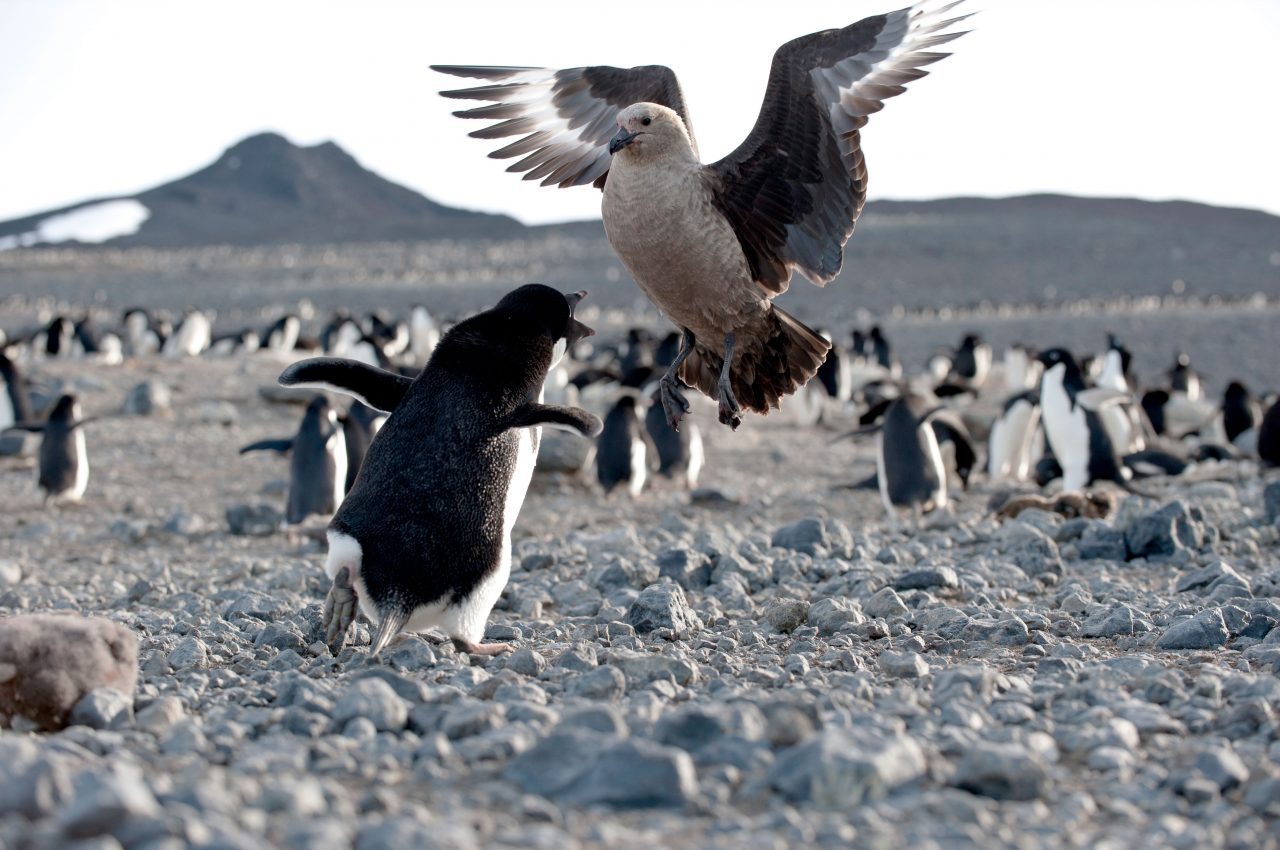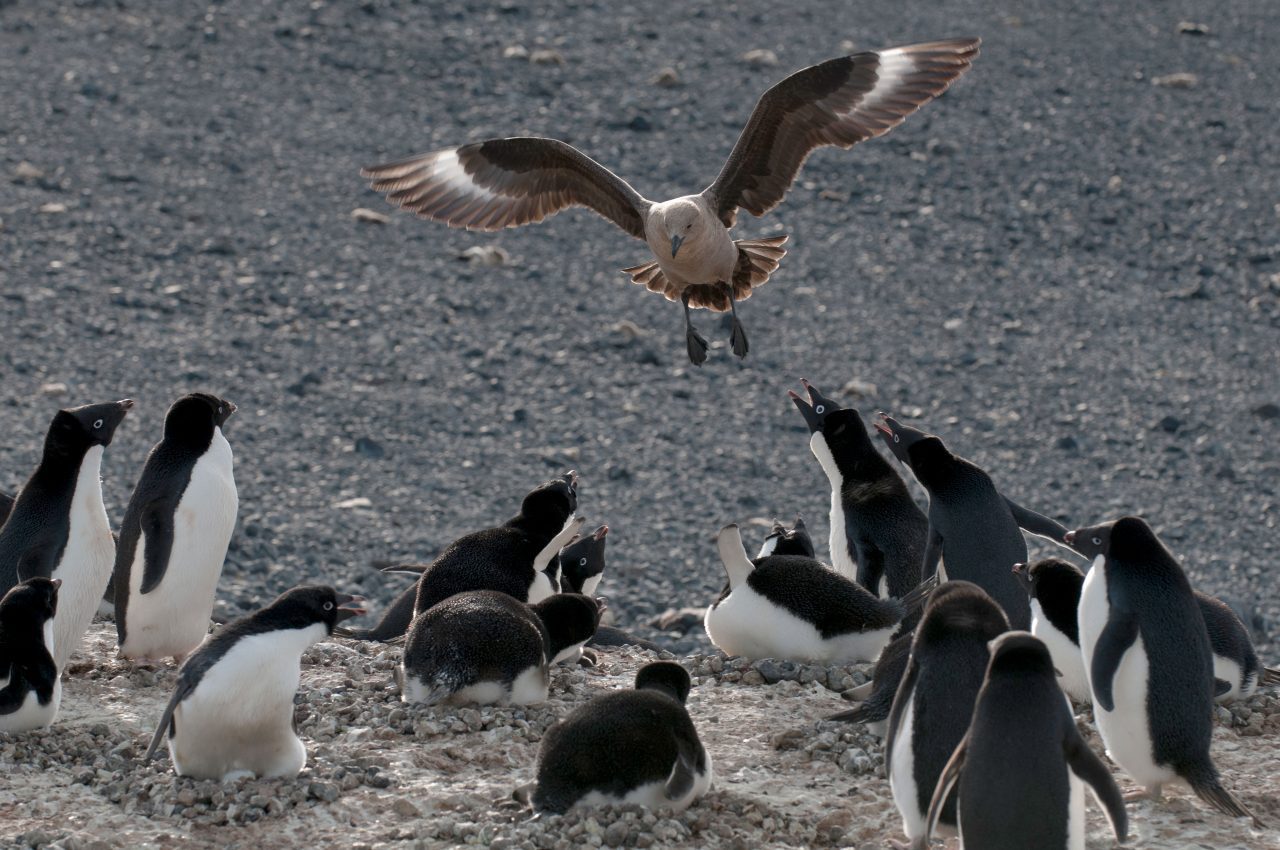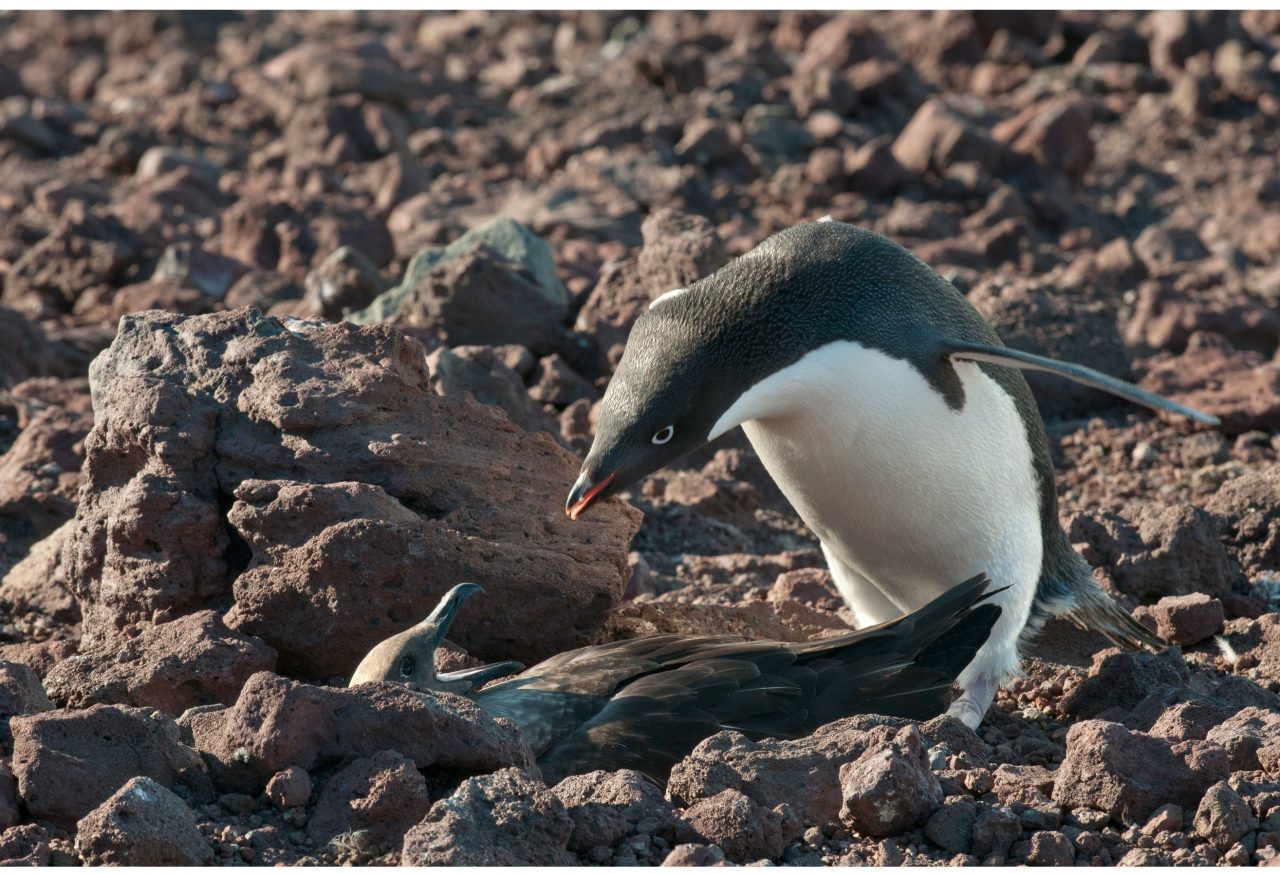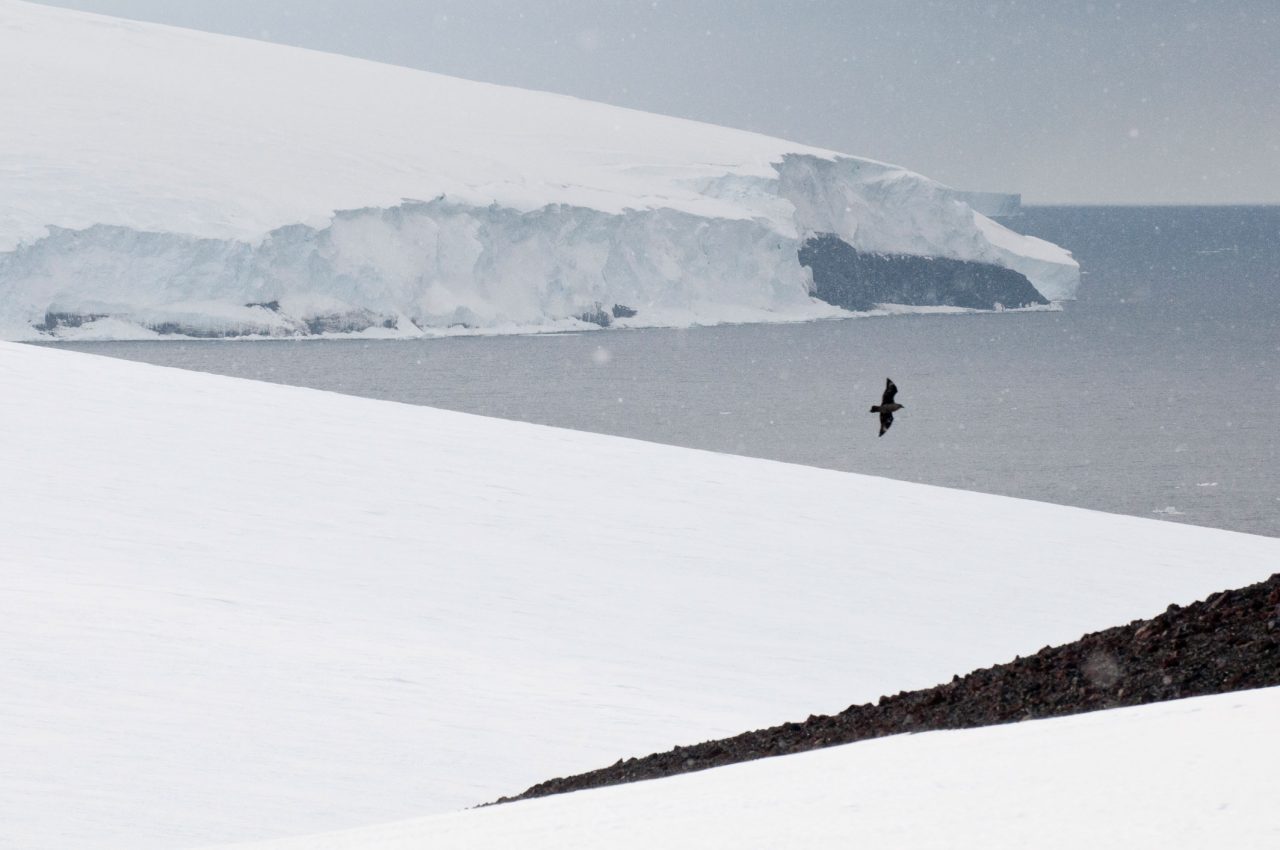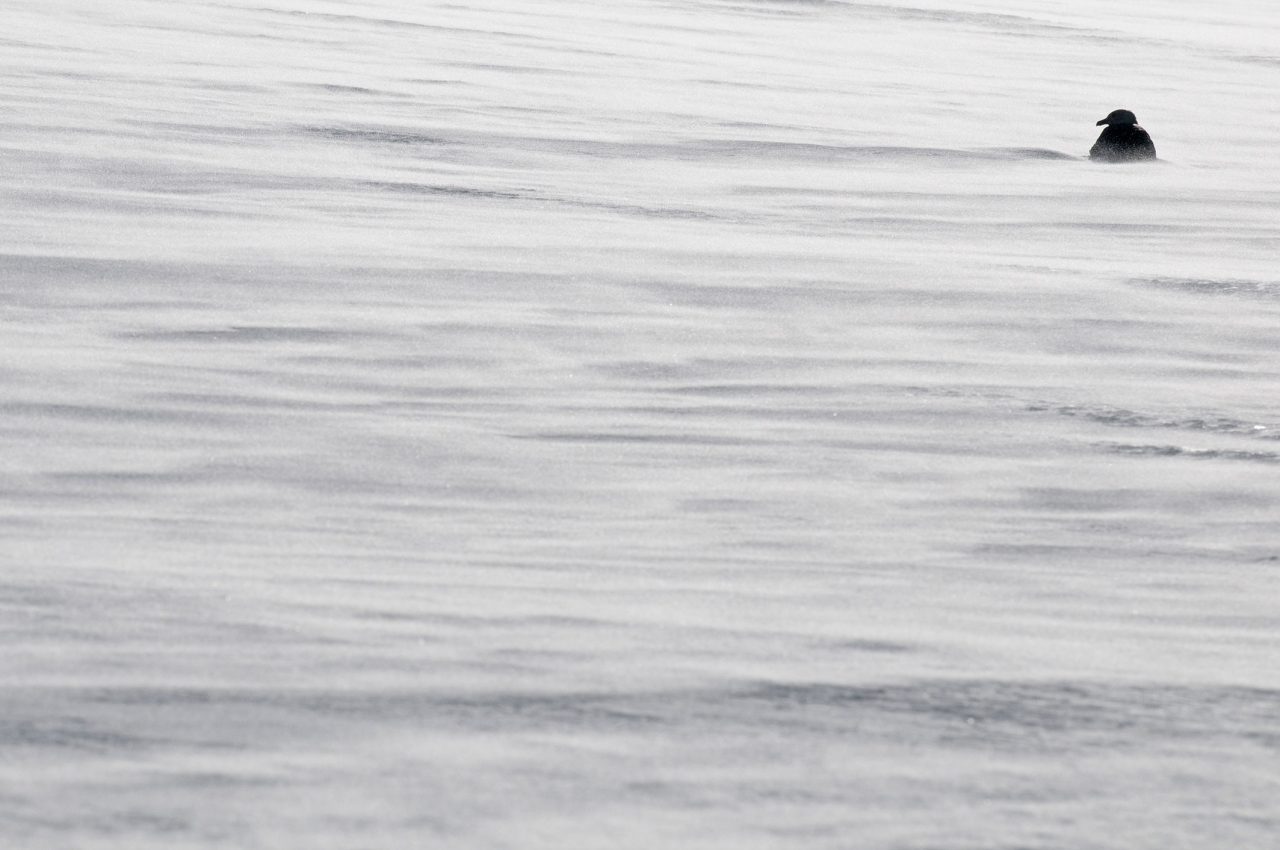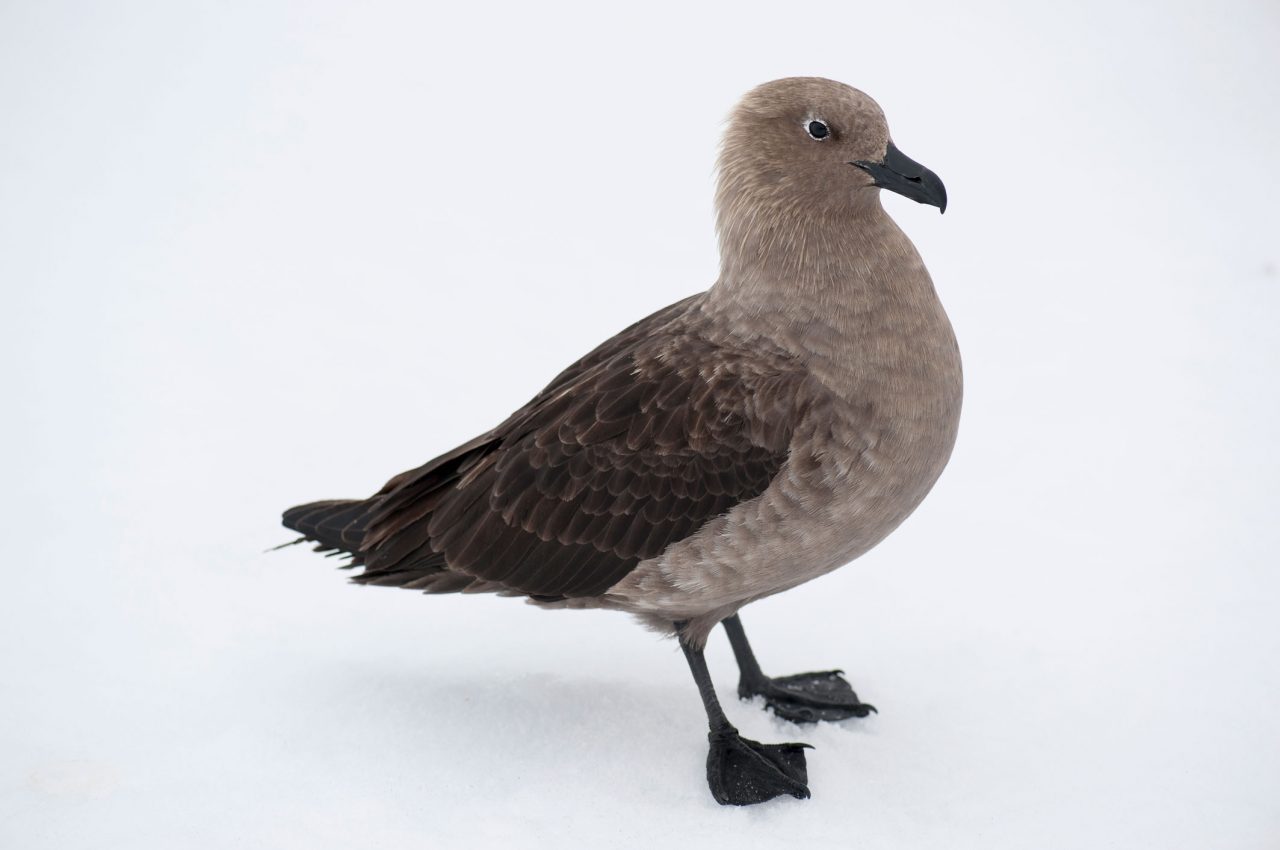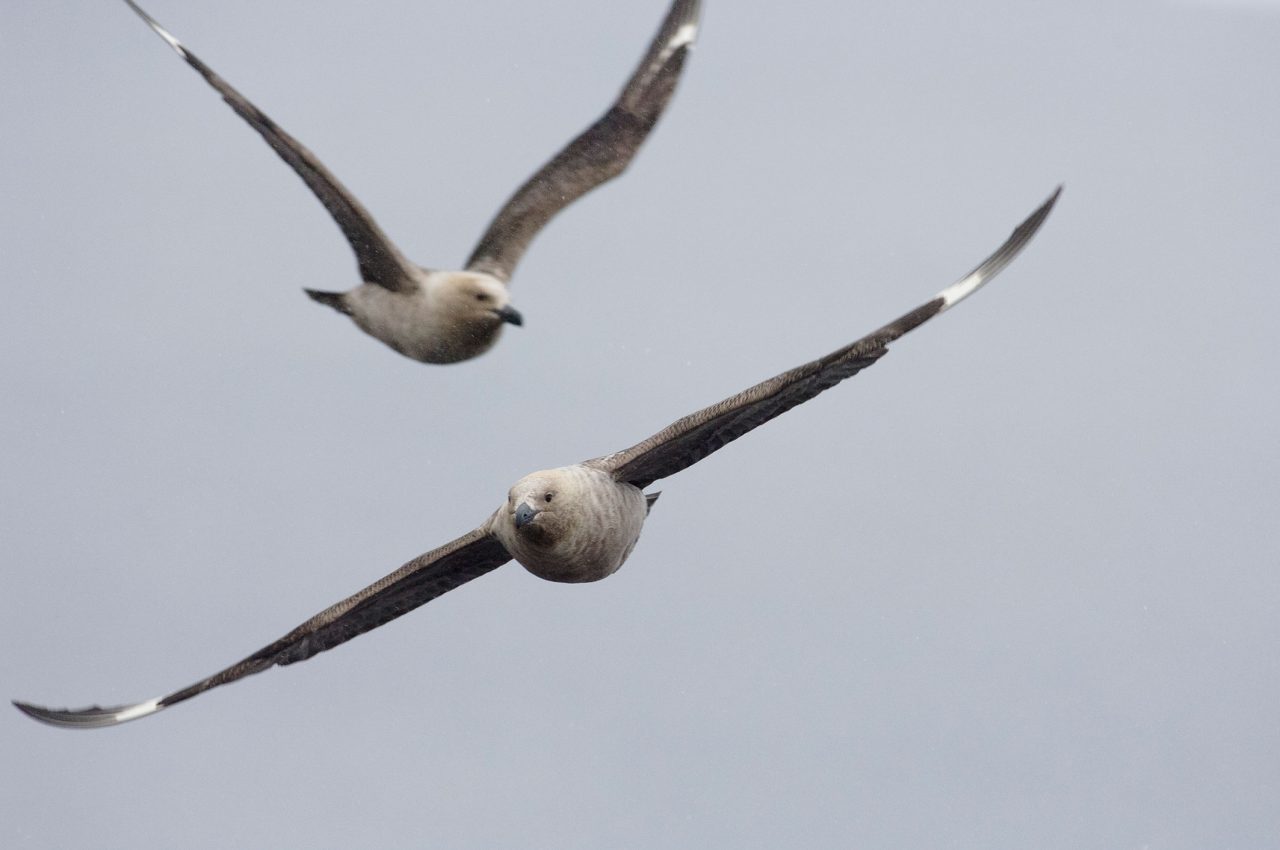Photo Essay: South Polar Skua, the Antarctic Survivor
Photos by Chris Linder; story by Hugh Powell
January 8, 2018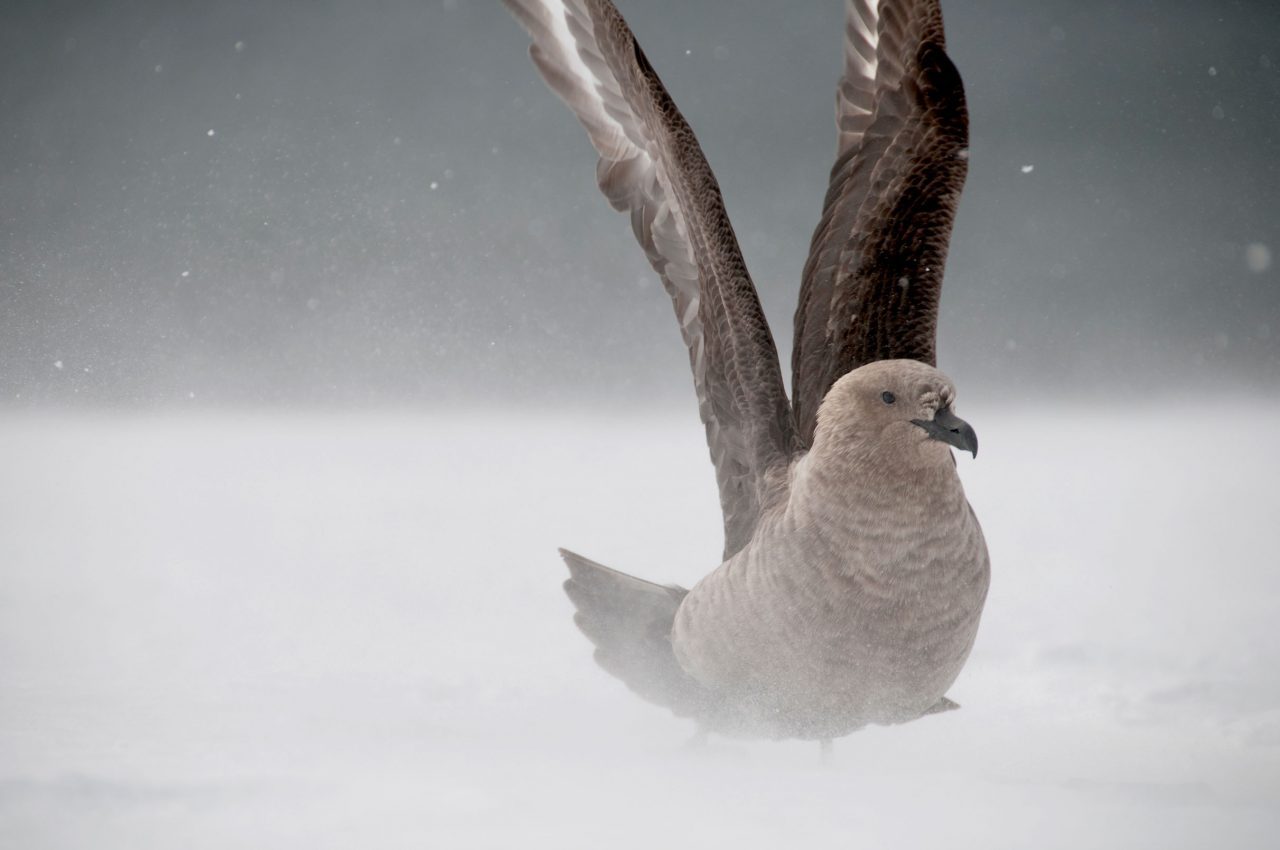
The South Polar Skua is famous for only two things: stealing penguin eggs and eating penguin chicks. What’s a bird to do with such a bad reputation? A closer look at the largest skua colony in the world—1,300 pairs breeding among 300,000 Adelie Penguin pairs at Cape Crozier, Ross Island, Antarctica—shows there’s much to admire in this inveterate survivor.
“The drama of Antarctic bird life is not without its villain.”
—Paul Siple and Alton Lindsey, scientists on the second Byrd expedition to Antarctica, 1933–35
Skuas are like gulls but with more attitude and fewer social graces. As Siple and Lindsey went on to say: “Theft and pillage, murder, cannibalism and infanticide, these crimes are all in the repertory of the South Polar Skua.” Regrettably, these big, burly birds are guilty as charged. They rob penguin nests. They pirate food from other seabirds. They even ambush Antarctic scientists to steal their sandwiches.
This view of skuas as penguin enemy #1 dominated scientific thought for the next half-century after Siple and Lindsey. But penguins are a limited-time food resource. As veteran Antarctic researcher David Ainley points out, “the penguin [breeding] colony is only there for a little over two months, and the rest of the year they still have to feed.”
Ainley’s studies in the 1960s were among the first to reevaluate the skua’s role as predator. Even in summer, he found, skuas mainly scavenged infertile eggs and the young chicks of inexperienced penguin pairs. For most of the year, skuas either catch fish themselves or—more often—steal fish from other birds. Their anatomy is tuned for aerial thieving: short wings for quicker wingbeats, coupled with long primary feathers for forward thrust. It all adds up to a bird that can accelerate like a Porsche to attack a petrel or albatross, pestering it into giving up its catch.
Oddly enough, these same adaptations make them clumsy when attacking penguins on the ground. Nevertheless, these intelligent birds are skilled raiders. Some even work in pairs, with one bird pulling at a penguin’s tail while the other stands by to grab at an unprotected egg or chick.

This Adelie Penguin egg was cracked and eaten by a South Polar Skua at Cape Crozier, Antarctica. 
At Cape Crozier, a South Polar Skua cruises over the penguin nests in its territory. 
Skuas are deft fliers that can swoop in on an uncovered egg and snatch it away in a moment. They tend to steal the eggs of younger, less experienced penguin parents. 
Skuas can also carry away Adelie Penguin chicks up to about 3 weeks old. 
Captured chicks can set off acrobatic chases in which skuas try to steal the prey from each other. 
All this rapacious activity leads to the skua's somewhat bloody reputation, but research shows the birds more often act as scavengers than as predators.
Defenders of Their Realm
Step onto a South Polar Skua’s breeding territory and you’ll first hear an alarm call. But if you stay much longer, you’re likely to get buzzed by a very large seabird at very close range.
“My first year at Crozier I could not believe how calm David [Ainley] was when he walked through the colony,” recalls Grant Ballard of Point Blue Conservation Science, who has made 19 trips to Cape Crozier in the last 22 years. “These birds fly all around your head all the time. They will pound on you. They will hit you right in the face.”
The birds are most aggressive after chicks hatch, Ballard says, when they smack intruders at full force with their clawed feet. On a British expedition in 1911, photographer Herbert Ponting recounted being almost blinded by a skua attack.
But the poignant truth is that South Polar Skuas spend long, lonely lives watching their nests fail. One banded skua at Crozier is about 50 years old. Since the 1970s, that bird might have fledged just five chicks—roughly one per decade, according to Ainley’s statistics. Most of the time, Antarctica’s short summer and formidable weather doom nest after nest, regardless of how many penguin chicks are around.

Cape Crozier is home to the southernmost open water in the world. Fierce winds keep the slopes scoured free of snow, creating nest sites for hundreds of thousands of Adelie Penguins. 
Skuas are infamously protective of their territory and won't hesitate to strike researchers with their clawed feet. 
But skuas have a hard life ahead of them, typically fledging only one chick per decade, according to Ainley. 
They are among the longest-lived of all wild birds. One banded skua at Cape Crozier recently turned 50 years old.
A Harsh Childhood for Young Skuas
Skuas mate more or less for life. In the short summers, it pays to be able to skip the lengthy courtship rituals every year. Around age seven, skuas pair up and start trying to nest—making a scrape in the volcanic gravel near a sheltering rock and decorating it with pieces of bone. The female lays two eggs, but that’s almost always wishful thinking. The older chick usually kills the younger chick within the first week of hatching.
The adults bring food—sometimes fish, sometimes penguin—to the little gray-white chick, feeding it tiny morsels. The chicks are stout-bodied and able to walk around the territory soon after they hatch, though they have to beware of skuas and penguins alike.

Here's a rare view of the more tender side of skuas: a parent shields its young chick from the elements while warming it against a patch of bare skin under its wing. 
The gray-white chicks are sturdy and can walk soon after hatching, but they must be careful of penguins and other skuas alike. 
Both skua parents work full time to raise their chicks, tearing up morsels of fish, krill, penguin, seal, and anything else they can find.
A Terrible Wind
When skua chicks die at Cape Crozier, it’s not from a lack of food; it’s too much wind.
“The adults do okay [in winds] up to 80 or 90 mph,” Ballard says. “But after that they’re at risk for their own life, and most skuas bail at that point.” At Cape Crozier, category 5 hurricane winds are not uncommon, Ballard says, and in most Antarctic summers a three-day “blow” of 100 mph or more happens a few times.
Adult skuas can fly up and out of the turbulent ground layer and wait out the storm from above. But the chicks are flightless. They may hide behind a rock for a while, but eventually the wind catches them, and they’re blown away like tumbleweeds.
The wind is a curse and a blessing. It clears Crozier’s snow to expose rocky nest sites and pushes the sea ice offshore, allowing sunlight and nutrients to create a bonanza of krill and fish for the taking.
Food is never the problem at Crozier, for penguins or skuas. It’s the wind.

Away from the coast, Antarctica is a desolate, cold, and windy place. Skuas make their living on the fringes of penguin colonies and at sea. 
A chick's worst enemy is the tremendous winds that sweep across Cape Crozier and out to sea. Adult skuas can fly above the storm, but flightless chicks aren't so lucky. 
Hurricane force winds can blow for days at a time. Here, Grant Ballard of Point Blue Conservation Science works on a windy day at Cape Crozier.
Beware of the Penguin
Skuas get a bad rap as ruthless predators, but they have to be careful around Adelie Penguins.
“Skuas look big, but they’re mostly just feathers,” Ainley says.
Skuas are so much smaller than Adelies (weighing 3 pounds to an Adelie’s 10 or 12) that once a healthy penguin chick is more than about three weeks old, skuas are rarely a threat. The skuas just aren’t big enough to carry them off.
And despite the Adelie’s toddler appeal, they are fierce animals with heavy, rigid flippers that can break a skua’s delicate wing bones.
“Skuas are deathly afraid of penguins,” Ainley says. “If a penguin gets ahold of a skua wing or foot, then it’s pretty much all over for the skua.”

Penguins are sturdy and fierce; skuas have the gift of flight. The two neighbors are locked into a perennially uneasy coexistence. 
Adelie Penguins can easily be triple the weight of a South Polar Skua. 
Skuas use their one key advantage, nimbly taking to the air to stay out of range of a protective penguin parent's flipper or beak. 
Colonies include many nonbreeding penguins. Without a nest to protect, they can wander freely and are often aggressive toward skuas.
Survivors of the South Pole
It may be time to rehabilitate the skewed image of the skua. Perhaps its name should evoke resourcefulness and determination in one of the world’s most forbidding climates. It’s the most southerly wanderer of all animals—even showing up at the South Pole itself.
Norwegian explorer Roald Amundsen saw two skuas on his way back from discovering the pole in 1911, when his expedition was still 300 miles from open ocean. He wrote: “To our unspeakable astonishment two great birds—skua gulls—suddenly came flying straight towards us. They brought us a message from the living world into this realm of death. … They did not allow themselves a long rest … then rose aloft and flew on to the south. Mysterious creatures!”

It takes a special bird to live on the Antarctic continent: only Snow Petrels, Adelie Penguins, and South Polar Skuas regularly manage it. 
Skuas are resourceful creatures that manage to survive in some of the most inhospitable weather on earth. 
But far from clinging to survival, they're also curious creatures that range widely across the frigid interior of Antarctica. 
Skuas have been seen at the South Pole itself, and they visited the sled teams of both the Norwegian explorer Roald Amundsen and the doomed British explorer Robert Falcon Scott while they were still hundreds of miles from the open sea.
Chris Linder’s photographic expeditions to Cape Crozier were supported in part by the National Science Foundation’s Antarctic Artists and Writers Program.

All About Birds
is a free resource
Available for everyone,
funded by donors like you
American Kestrel by Blair Dudeck / Macaulay Library
